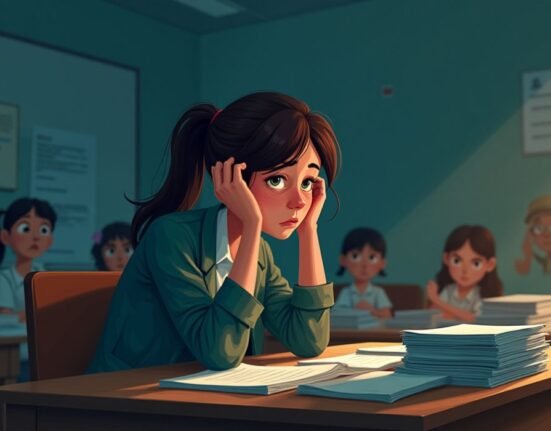You may have had your own little “group” in school that you hung out with. There may even have been some groups that you did not get along with, or even have some altercations with. But imagine- there is a treasure hunt in your school, and your entire class participates as a group. While solving the clues and looking for the prize, both groups forget about their differences. You work together as one group- solving riddles and clues to get to the prize and win. Why does this happen? How do you go from hating each other one moment to working together in the next?
Robbers Cave Experiment
This phenomenon was explained by Muzafer Sherif, in a series of experiments conducted by him in the 1950s. Group conflict was observed and even initiated in two groups of campers. This competition led to hostility and negative attitudes between the groups, including name-calling and vandalism.
In the final stage of the experiment, Sherif attempted to reduce the conflict between the groups by introducing situations that required them to work together to achieve common goals. Through these cooperative tasks, the boys gradually started to see each other as allies rather than enemies, and intergroup hostility decreased. The Robbers Cave Experiment demonstrated how group identities can form quickly and how competition between groups can lead to hostility and conflict.

Why does this happen?
Observing the effects of his experiment, Sherif conceptualized the results into a theory- known as the Realistic Conflict Theory– which acts as a social psychological model of intergroup conflict. It explains how feelings of hostility occur between groups when resources are scarce. When groups perceive themselves as competing, they tend to develop negative attitudes and prejudices toward one another. This competition fosters an “us versus them” mentality, leading to increased hostility, discrimination, and intergroup conflict.
Read More: Conformity and Rebellion: Understanding Social Influence in Groups
An important aspect of RCT is its emphasis on the role of realistic factors, such as economic or material resources, in fueling intergroup conflict, whereas other theories and explanations of group conflict emphasize the role of psychological or cognitive factors. When there is some sort of competition between the two groups, feelings of resentment are fostered. Usually, in such perceived competition, there is a zero-sum fate. This means that only one group will emerge as the winner- and take away the resources, leaving behind the other group with nothing in their hands.
Another factor at work here is social identity theory. Developed by Henri Tajfel and John Turner in the 1970s, it proposes that individuals’ self-concept and self-esteem are not only derived from their attributes but also from their membership in social groups. According to SIT, people categorize themselves and others into various social groups based on characteristics such as race, ethnicity, gender, religion, occupation, and so on. The boys in Sherif’s experiment did not have a problem with each other because of their values, but it was because they saw the group as the “other”.
Read More: Social Psychology: The Landscape of Human Interaction
The experiment
Let’s understand what happened in the experiment. The experiment took place at a summer camp, where 22 boys aged 11 to 12 were carefully selected to participate. The researchers divided the boys into two groups- the Eagles and the Rattlers and facilitated bonding within each group. This was done through various activities such as hiking, swimming, etc. Group cohesion was further strengthened by assigning group names, providing distinctive uniforms, and encouraging group pride. This made the boys develop a sense of unity, they started seeing the groups as “us” and “them”.
After this, the experiment entered its critical stage- the introduction of intergroup competition. The Eagles and the Rattlers were brought into direct competition through a series of contests and games. As the competition intensified, so did the hostility between the groups. Insults, derogatory remarks, and acts of aggression became increasingly common as the boys displayed strong ingroup bias and hostility towards the opposing group. The researchers observed how simply categorizing the boys into separate groups, along with the introduction of competitive scenarios, led to the formation of ingroup-outgroup distinctions and the emergence of intergroup conflict.

Recognizing the need to address this conflict, Sherif and his team devised strategies to promote intergroup cooperation. They organized activities that required both groups to collaborate and work together towards common goals, such as solving a series of problems or completing tasks that necessitated mutual assistance.
These were called “superordinate goals”- which means goals that cannot be achieved by one group alone and need the cooperation of both groups. Through these, the boys gradually began to see members of the opposite group in a more positive light, leading to a reduction in intergroup hostility and the development of cross-group friendships.
Applications and real-world Relevance of Robbers Cave Experiment
The experiment highlights the importance of understanding intergroup dynamics in addressing conflicts between different social or cultural groups. We hear countless stories of communal violence in the world. Applications of the Robber’s cave experiment can be used to curb this sort of violence- maybe by making people of various ethnicities work together, to increase cooperation.
It can be a helpful tool in organizational psychology, which is a branch of psychology that applies principles of this discipline to the workplace. Managers can use strategies influenced by this experiment to help increase cooperation and improve teamwork.
It can also be used in educational institutions. Intergroup hostility can be common in schools- viewing people of different classes as the “other group”. Implementing diversity training programs in schools to address prejudice, discrimination, and stereotyping, fostering empathy, and promoting cooperation among students can thus be a use of this experiment.
Take Away
The article talks about a very interesting experiment in the field of psychology- the Robber’s Cave Experiment. It was conducted by Muzafer Sherif in the 1950s and deals with how intergroup hostility is established in groups and how it can be reduced by the use of superordinate goals. It also talks about the theories of realistic conflict theory and social identity theory- both of which are the underlying explanations of this experiment. The robber’s cave experiment is also very famous because it can be, and is being used in real-life settings to avoid and to deal with conflict between groups. With more and more research being done, it is also increasingly being used to improve cooperation and efficiency.
References +
- Mcleod, S., PhD. (2023). Robbers Cave Experiment | Realistic Conflict Theory. Simply Psychology. https://www.simplypsychology.org/robbers-cave.html
- Shariatmadari, D. (2018, April 17). A real-life Lord of the Flies: the troubling legacy of the Robbers Cave experiment. The Guardian. https://www.theguardian.com/science/2018/apr/16/a-real-life-lord-of-the-flies-the-troubling-legacy-of-the-robbers-cave-experiment
- Wikipedia contributors. (2023, September 21). Realistic conflict theory. Wikipedia. https://en.wikipedia.org/wiki/Realistic_conflict_theory
- Wikipedia contributors. (2024, February 10). Social identity theory. Wikipedia. https://en.wikipedia.org/wiki/Social_identity_theory













Leave feedback about this